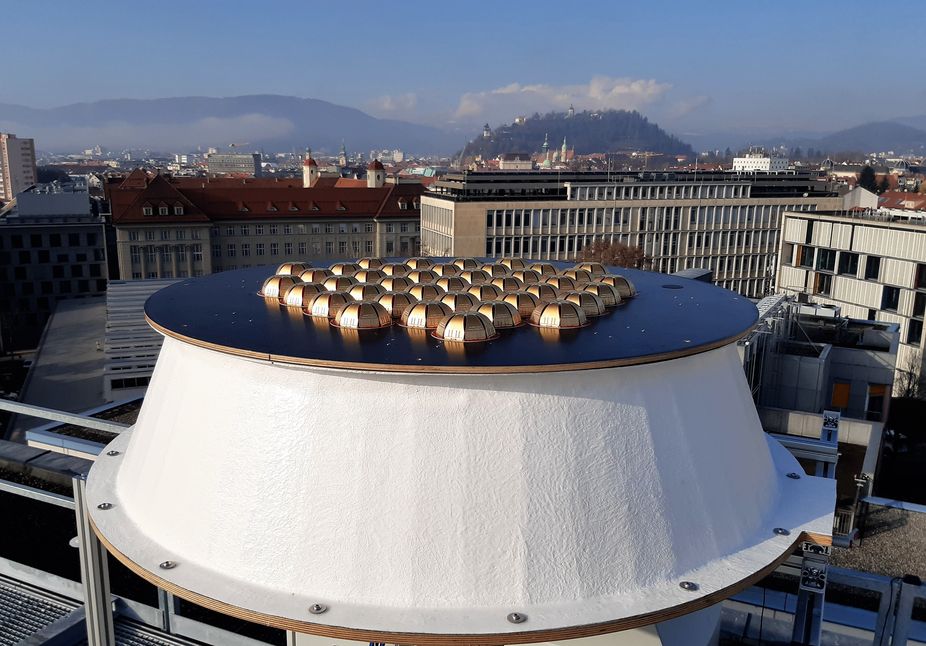Innovative high gain antenna for the European Space Agency ESA
The experts of the research group "Space and Communication Technology" of the Institute DIGITAL are working on the project "BLIND" to develop a high-gain antenna for the GNSS L1/E1 band for the European Space Agency ESA.
Thomas Prechtl, Florian Koller, Roman Lesjak and Günter Lammer have developed the antenna. Essentially, it consists of an antenna array with 40 elements.
By means of suitable signal processing, the signals can be combined in such a way that they stand out from the thermal noise and therefore enable ESA to carry out a wide variety of research activities. Among other things, the signals can be used for localization without their signal structure being known (hence the name BLIND). The data acquisition is carried out with the help of 20 software-defined radios with 35 MHz bandwidth per antenna on 20 NUC PCs. In total, this antenna generates 5600 MB/s of data, which is reduced to 1400 MB/s in real time before being transferred to a server for further processing.
The antenna is currently being tested on the roof of the Institute building at Steyrergasse 17 and will then be delivered to ESA.
